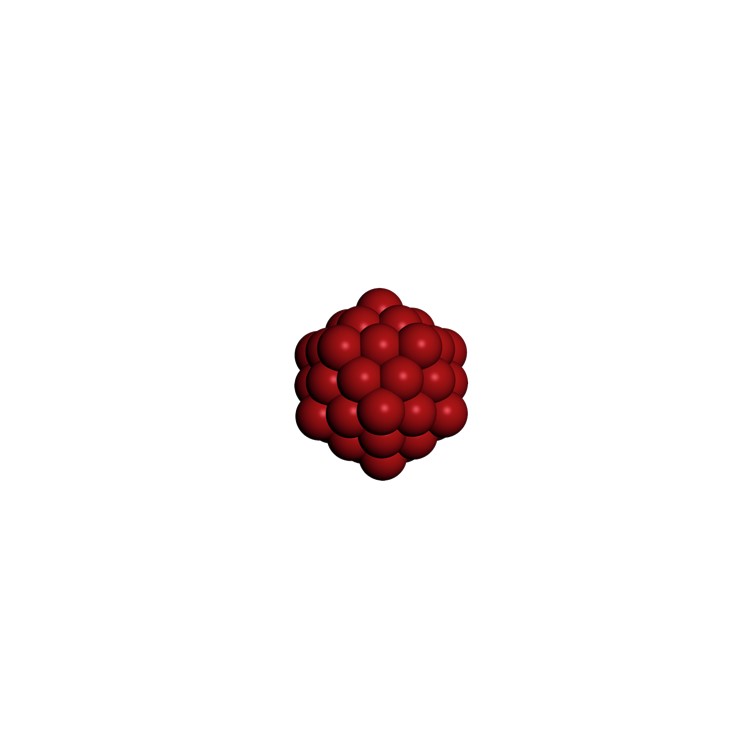TURBOMOLE 7.5 化學計算軟體

- TURBOMOLE 7.5 化學計算軟體
-
類別生化統計分析軟體
-
介紹Turbomole被認為是進行HF,DFT,MP2計算最快最穩定的代碼之一。它的特色不是在於新方法和新功能,而在於解決如何用盡量短的時間和 盡量少的內存需求,快速、穩定地處理工業應用型的分子。特別是它獨有的RI-DFT方法,據稱可以較其它大多數DFT程序節省10倍的CPU時間,因此非 常適合於大分子計算或中等分子的重複性計算(如幾何優化)
TURBOMOLE 7.5 chemical calculation software
• New DFT functionals r2-SCAN, r2-SCAN-3c and DFT-D4
dis persion for r2-SCAN and r2-SCAN-3c added.
Functional names:
• r2scan and r2scan-3c using original routines
(J. Furness)for energy and geometry optimizations.
• r2scan-libxc and r2scan-3c-libxc using libxc library for
all properties including vibrational frequencies and
TDDFT
• def2-mTZVPP basis set for r2-SCAN-3c ‘Swiss army
knife’ functional
• Local DFT hybrid LH20-t functional added to list of
known functionals
• Segmented Contracted Error-Consistent Basis Sets of
Quadruple-ζ Valence Quality for One- and Two
-Component Relativistic All-Electron Calculations
Fixes and enhancements
• Check added for outlying charge correction when using
COSMO FINE cavity (Isorad) to ensure stability of the
algorithm.
• Vibrational frequencies for unrestricted DFT calculations
using MGGA functionals with the libxc library re-enabled.
• Enhance relativistic calculations with general-contracted
bases
Overview of TURBOMOLE Features
TURBOMOLE has been designed for robust and fast quantum chemical applications
It provides:
• all standard and state of the art methods for ground state
calculations (Hartree-Fock, DFT, MP2, CCSD(T), …)
• very fast molecular and periodic DFT codes
• very efficient Coupled-Cluster-F12 implementation
• excited state calculations at different levels (full RPA,
TDDFT, ADC(2), CC2, CIS(D), …)
• geometry optimizations, transition state searches,
molecular dynamics calculations
• various properties and spectra (IR, UV/Vis, Raman, CD)
• fast and reliable code, approximations like resolution
of identity (RI) are used to speed-up the calculations
without introducing uncontrollable or unknown errors
• parallel version for almost all kind of jobs
• free graphical user interface
Initially TURBOMOLE has been specially designed for UNIX workstations as well as PCs and efficiently exploits the capabilities of this type of hardware. Meanwhile,
TURBOMOLE runs on almost all kinds of hardware and systems, from standard Windows or MacOS Notebooks up to massively parallel supercomputers. Most users run TURBOMOLE
on Linux PCs, either local multi-core systems or clusters.
TURBOMOLE consists of a series of modules; their use is facilitated by various tools and a graphical user interface TmoleX. Almost all time consuming parts of TURBOMOLE
are parallelized for SMP/multi-core systems and/or for clusters
using standard MPI.
Outstanding features of TURBOMOLE
• Broad range of methods from universal force field to
fast semi-empirical methods, standard DFT and MP2
to coupled-cluster and post-HF methods
• Structure and properties of excited states using DFT
and post-HF methods
• Treatment of relativistic effects like spin-orbit coupling
and exact two-component (X2C) Hamiltonian for most
applications
• COSMO calculations for solvation effects at most levels
and properties and as input for the COSMOtherm software
• Low memory and disk space requirements by using direct
and semi-direct algorithms with adjustable memory and
disk space: run larger applications on existing hardware
• Full use of all finite point groups (unique feature in
Quantum Chemistry: exploit symmetry of all point groups
like D5d, Oh, Ih,… get a speed up of up to 120 for Ih)
• Efficient integral evaluation
• Stable and accurate grids for numerical integration of
DFT functionals
Methods
• Hartree-Fock, DFT, DFT-D3, DFT-D4, GGA, meta-GGA,
hybrid, double-hybrid, local hybrid functionals
• RI approximation for DFT, MP2, CC, CCSD, CCSD(T), …
• RI-K approximation for Hartree-Fock, DFT, TDDFT, …
• MP2, CC2, ADC(2), CCSD(T), MP2-F12, CCSD(T)-F12
• PNO-MP2,PNO-CCSD(T0), PNO-CCSD(T), OSV-PNO
- MP2-F12
• post-DFT: RI-RPA, GKS-spRPA
• GW, RI-GW, Bethe-Salpeter
• GFN2-xTB, UFF
• X2C, DKH, spin-orbit coupling, X2C NMR, X2C TDDFT
• fast semi-numerical exchange, pseudospectral approach
Properties
• Search for minima, global structure optimization using
gene tic algorithm, molecular dynamics
• Transition state searches, both local and reaction path
optimization
• Scans of potential energy surface, both unrelaxed and
relaxed; scans along one or many internal coordinates
• IRC, DRC, minimum energy crossing points
• Non-adiabatic surface hopping molecular dynamics
• Calculations of IR and Raman spectra
• UV-VIS, CD and VCD spectra, color prediction, calculation
of polarizabilities and hyperpolarizabilities, two-photon
absorption spectra
• Calculations of NMR chemical shifts and coupling constant s, NICS
• Calculations of fluorescence and absorption spectra as well
as Vibrationally Promoted Electronic Resonance (VIPER)
spectra
Features Key methods
• Restricted, unrestricted, and restricted open-shell
wavefunctions
• Density Functional Theory (DFT) including most of
the popular exchange-correlation functionals, i.e.,
LDA, GGA, hybrid, meta-GGA, double-hybrid functionals.
• D3 and D4 dispersion corrections for density functionals
and Hartree-Fock
• Hartree-Fock (HF) and DFT response calculations: stability,
dynamic response properties, and excited states
• Two-component relativistic calculations including spin
-orbit interactions for all exchange- correlation functionals
• Second-order Møller-Plesset (MP2) perturbation theory for
large molecules
• Second-order approximate coupled-cluster (CC2) method
for ground and excited states
• Second-order coupled-cluster with triples correction CCSD
(T) method for ground state energies
• Treatment of Solvation Effects with the Conductor-like
Screening Model (COSMO)
• Novel developments like DFT+Dispersion corrections,
explicitly correlated basis set for CCSD (F12) included
• Universal force field (UFF)
Key properties
• Structure optimization to minima and saddle points
(transition structures)
• Analytical vibrational frequencies and vibrational
spectra for HF and DFT, numerical for all other methods
• NMR shielding constants for DFT, HF, and MP2 method
• Ab initio molecular dynamics (MD)
DFT and HF ground and excited states
• Efficient implementation of the Resolution of Identity (RI)
and Multipole Accelerated Resolution of Identity (MARI)
approximations allow DFT calculations for molecular and
periodic systems of unprecedented sizes containing hundre
ds of atoms
• Ground state analytical force constants, vibrational
frequencies and vibrational spectra
• Empirical dispersion correction for DFT calculations
(including the DFT-D3 and DFT-D4 dispersion corrections)
• Eigenvalues of the electronic Hessian (stability analysis)
• Frequency-dependent polarizabilities and optical rotations
• Vertical electronic excitation energies
• Transition moments, oscillator and rotatory strengths of
electronic excitations, UV-VIS and CD spectra
• Gradients of the ground and excited state energy with
respect to nuclear positions; excited and ground state
equilibrium structures; adiabatic excitation energies,
emission spectra
• Exited state electron densities, charge moments,
population analysis
• Excited state force constants by numerical differentiation
of gradients, vibrational frequencies and vibrational spectra
Periodic systems: crystals and surfaces
• Periodic boundary conditions for 3D, 2D and 1D DFT and
HF calculations
• Brillouin zone sampling using k-points, geometry
optimization, cell optimization
• Band structure plots, density of states, export of periodic
density and orbitals with most common file formats
MP2 and CC2 methods
• Efficient implementation of the Resolution of Identity (RI)
approximation for enhanced performance
• Closed-shell HF and unrestricted UHF reference states
• Sequential and parallel (with MPI) implementation (with
the exception of MP2-R12)
• Ground state energies and gradients for MP2, spin-
component scaled MP2 (SCS-MP2) and CC2
• Ground state energies for MP2-R12
• Excitation energies for CC2, ADC(2) and CIS(D)
• Transition moments for CC2
• Excited state gradients for CC2 and ADC(2)

系統需求
Windows Vista, 7, 8 and 10 (32 and 64 bit)

TURBOMOLE 7.5 化學計算軟體
• 添加了用於 r2-SCAN 和 r2-SCAN-3c 的新DFT函數 r2-SCAN、
r2-SCAN-3c 和 DFT-D4 分散。功能名稱:
• r2scan 和 r2scan-3c 使用原始例程 (J. Furness)進行能量
和幾優化。
• r2scan-libxc 和 r2scan-3c-libxc 使用 libxc 庫獲取所有性,
包括振動頻率和 TDDFT
• r2-SCAN-3c“瑞士軍刀”功能的 def2-mTZVPP 基組
• 本地 DFT 混合 LH20-t 函數添加到已知函數列表
• 用於一分量和二分量相對論全電子計算的四元 ζ 價質量
的分段收縮誤差一致基集
修復和增強
• 使用 COSMO FINE 腔 (Isorad) 時添加的檢查已添加外圍
電荷校正,以確保算法的穩定性。
• 使用重新啟用 libxc 庫的 MGGA 泛函進行無限制 DFT
計算的振動頻率。
• 使用通用收縮基增強相對論計算
TURBOMOLE 功能概述
TURBOMOLE 專為穩健快速的量子化學應用而設計
它提供:
• 用於基態計算的所有標準和最先進的方法(Hartree-Fock
、DFT、MP2、CCSD(T)……)
• 非常快的分子和周期性 DFT 代碼
• 非常高效的 Coupled-Cluster-F12 實現
• 不同級別的激發態計算(完整 RPA、TDDFT、ADC(2)、
CC2、CIS(D)……)
• 幾何優化、過渡態搜索、分子動力學計算
• 各種特性和光譜(IR、UV/Vis、拉曼、CD)
• 快速可靠的代碼,使用近似值(如身份分辨率(RI))來加速計算,
而不會引入無法控製或未知的錯誤
• 幾乎所有類型的工作的並行版本
• 免費的圖形用戶界面
TURBOMOLE最初是專為 UNIX 工作站和 PC 設計的,並有效地利用了此類硬件的功能。同時,TURBOMOLE幾乎可以在所有類型的硬件和系統上運行,從標準的 Windows 或 MacOS 筆記本電腦到大規模並行的超級計算機。大多數用戶在 Linux PC 上運行TURBOMOLE,無論是本地多核系統還是集群。
TURBOMOLE由一系列模塊組成;各種工具和圖形用戶界面 TmoleX 促進了它們的使用。幾乎所有 TURBOMOLE 的耗時部分都針對 SMP/多核系統和/或使用標準 MPI 的集群進行了並行化。
TURBOMOLE的突出特點
• 範圍廣泛的方法,從通用力場到快速半經驗方法、
標準 DFT 和MP2 到耦合簇和後高頻方法
• 使用 DFT 和後 HF 方法的激發態的結構和性質
• 在大多數應用中處理相對論效應,如自旋軌道耦合和精確的
雙分量 (X2C) 哈密頓量
• COSMO 計算大多數水平和屬性的溶劑化效應,並作為
COSMOtherm 軟件的輸入
• 通過使用具有可調內存和磁盤空間的直接和半直接算法來降低
內存和磁盤空間要求:在現有硬件上運行更大的應用程序
• 充分利用一切有限的點組(在量子化學獨特的功能:
利用所有點團狀d的對稱5d中,O- ^ h,我^ h,......
得到一個速度最高達120對我的^ h)
• 高效的積分評估
• 用於 DFT 泛函數值積分的穩定且準確的網格
方法
• Hartree-Fock、DFT、DFT-D3、DFT-D4、GGA、meta
-GGA、混合、雙混合、局部混合泛函
• DFT、MP2、CC、CCSD、CCSD(T)、...的 RI 近似
• Hartree-Fock、DFT、TDDFT 的 RI-K 近似,...
• MP2、CC2、ADC(2)、CCSD(T)、MP2-F12、CCSD(T)-F12
• PNO-MP2、PNO-CCSD(T0)、PNO-CCSD(T)、OSV-PNO
-MP2-F12-MP2-F12
• DFT 後:RI-RPA、GKS-spRPA
• GW, RI-GW, Bethe-Salpeter
• GFN2-xTB, UFF
• X2C、DKH、自旋軌道耦合、X2C NMR、X2C TDDFT
• 快速半數值交換,偽譜方法
特性
• 搜索最小值,使用遺傳算法進行全局結構優化,分子動力學
• 過渡狀態搜索,局部和反應路徑優化
• 未鬆弛和鬆弛的勢能面掃描;沿一個或多個內部坐標掃描
• IRC、DRC、最小能量交叉點
• 非絕熱表面跳躍分子動力學
• 紅外和拉曼光譜的計算
• UV-VIS、CD 和 VCD 光譜、顏色預測、極化率和超極化率的計算、
雙光子吸收光譜
• 計算 NMR 化學位移和耦合常數,NICS
• 計算熒光和吸收光譜以及振動促進電子共振 (VIPER) 光譜
spectra
特徵
關鍵方法
• 受限、非受限和受限開殼波函數
• 密度泛函理論 (DFT) 包括大多數流行的交換相關泛函,
即 LDA、GGA、混合、元 GGA、雙混合泛函。
• 密度泛函和 Hartree-Fock 的 D3 和 D4 色散校正
• Hartree-Fock (HF) 和 DFT 響應計算:穩定性、
動態響應特性和激發態
• 雙分量相對論計算,包括所有交換相關泛函的自旋軌道相互作用
• 大分子的二階 Møller-Plesset (MP2) 微擾理論
• 基態和激發態的二階近似耦合簇 (CC2) 方法
• 基態能量三重校正 CCSD(T) 方法的二階耦合簇
• 使用類導體篩選模型 (COSMO) 處理溶劑化效應
• 包括 DFT+Dispersion 校正、CCSD (F12) 的明確相關基組等
新進展
關鍵屬性
• 對最小值和鞍點(過渡結構)的結構優化
• HF 和 DFT 的分析振動頻率和振動光譜,所有其他方法的數值
• DFT、HF 和 MP2 方法的 NMR 屏蔽常數
• 從頭算 分子動力學 (MD)
DFT 和 HF 基態和激發態
• 識別分辨率 (RI) 和多極加速識別 (MARI) 近似的有效實現允許
對包含數百個原子的前所未有大小的分子和周期系統進行
DFT 計算
• 基態分析力常數、振動頻率和振動譜
• DFT 計算的經驗色散校正(包括 DFT-D3 和 DFT-D4 色散校正)
• 電子 Hessian 的特徵值(穩定性分析)
• 頻率相關的極化率和旋光度
• 垂直電子激發能量
• 電子激發的躍遷矩、振盪器和旋轉強度、UV-VIS 和 CD 光譜
• 基態和激發態能量相對於核位置的梯度;激發態和基態平衡結構;
絕熱激發能,發射光譜
• 退出態電子密度、電荷矩、布居分析
• 通過梯度、振動頻率和振動譜的數值微分得到激發態力常數
週期系統:晶體和表面
• 用於 3D、2D 和 1D DFT 和 HF 計算的周期性邊界條件
• 使用 k 點的布里淵區採樣、幾何優化、單元優化
• B能帶結構圖、狀態密度、週期密度和軌道的導出以及最
常見的文件格式
MP2 和 CC2 方法
• 有效實施身份分辨率 (RI) 近似以提高性能
• 閉殼 HF 和不受限制的 UHF 參考狀態
• 順序和並行(使用 MPI)實現(MP2-R12 除外)
• MP2、自旋分量縮放 MP2 (SCS-MP2) 和 CC2 的基態能量和梯度
• MP2-R12 的基態能量
• CC2、ADC(2) 和 CIS(D) 的激勵能量
• CC2 的過渡時刻
• CC2 和 ADC(2) 的激發態梯度

CrystalDiffract v6 化學分子軟體
CrystalDiffract將X射線和中子粉末衍射的世界帶到您的計算機屏幕上,通過交互式控制和輕鬆表徵您的實驗數據。實時參數控制可讓您試驗衍射和样本設置,並提供即時反饋。將這些與即時混合物創建相結合-以及在同一窗口中加載觀察數據的能力 -您將擁有一個強大的工作台應用程序,供研究人員、教師和學生使用。
EnzFitter 2 酵素動力學資料軟體
EnzFitter是一個通用的曲線擬合軟件包,它的定制功能使其特別適用於酶動力學實驗的分析。例如,對於單底物和雙底物速率數據,可以獲得初始速率和參數值以及它們的置信限。內置模型包括有或沒有底物抑制的Michaelis-Menten,競爭性、非競爭性和混合性抑制,三元復合或有序雙雙系統以及有或沒有底物抑制的乒乓。你可以很容易地在常規代數語法中添加其他模型。
AssayZap 3.0 實驗分析計算軟體
AssayZap是一種普遍的實驗分析計算軟體,它主要針對RIA, ELISA, IRMA,比色及其它類型的化學分析。 它能夠處理的數量高達2^31。標準曲線可以被配備2個參數、4個參數、4個加權參數、或者是獨特的手工互動裝備,它可允許安裝所有的不同形狀的標準曲線。實驗分析可以包含多達2000支軟管和四條標準曲線,每個可包含高達24個值。實驗分析的要點可以通過標準曲線間的插補結果來補充。

